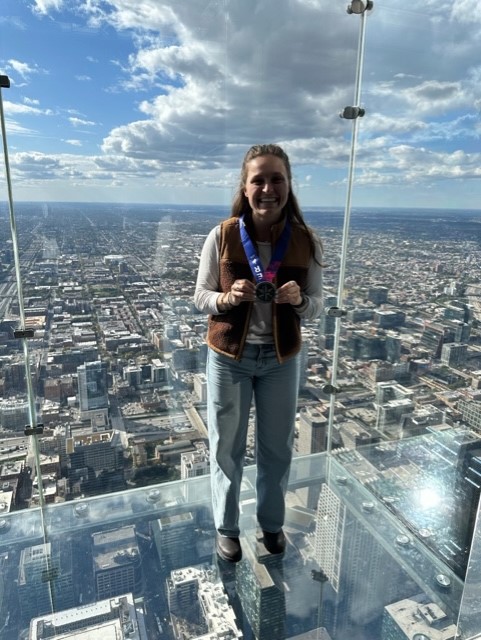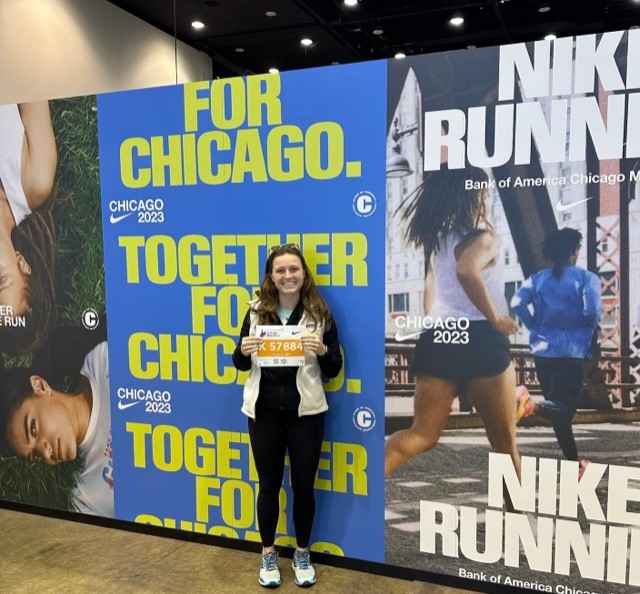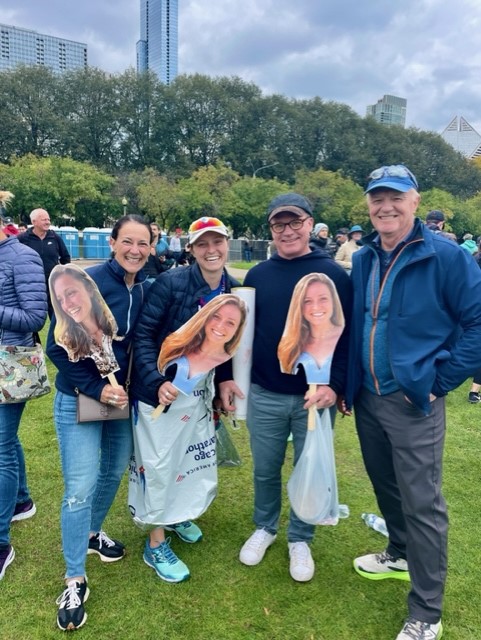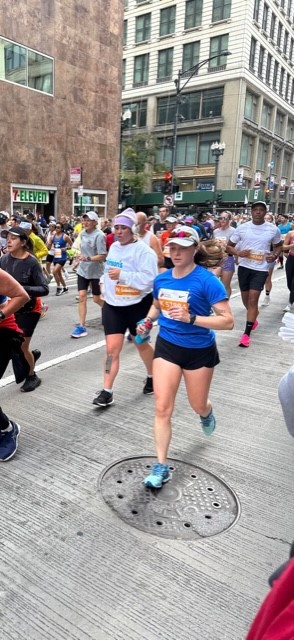
I count myself as a recreational runner, hitting the road for a few miles at a time to get my heart rate up and break a sweat. So when my colleague, Alicia, approached me about signing up for the Chicago Marathon last October, I was hesitant at first. Nevertheless, I decided to take the plunge and put my name into the drawing.
I was not selected from the lottery for a number, so I decided to look for a charity that was meaningful to me and ask if I could join their team. Luckily, I was able to secure a bib this way and I was in the running, literally. In the weeks and months that followed, I was challenged both physically and mentally.
The training process could be both satisfying and disappointing at times. Heading out into the July heat took accountability from both Holly, our veteran marathoner and Alicia, a fellow novice. I gained an appreciation for the sides of training that take place with both feet on the ground, like fueling correctly, hydrating not only during the run but throughout the entire week leading up to it, and of course, recovering afterwards.
I was surprised by the gravity of the role that food played in each run. I was not used to being on my feet long enough to require coordinated fuel stops and water breaks. This challenged both my body and mind in a new way. Along with many, many lessons to be learned, I was excited for the opportunity to
practice what I preach to marathoners who come into the clinic. For example, I tried to maintain a strength program geared towards building resilience in the muscles that I knew would be taking a beating during the race, such as my hip stabilizers, my quadriceps and my calf muscles. I believe that this allowed me to manage some stubborn knee pain that arose as the runs lengthened in time and distance. Additionally, I took note of the wear on my running sneakers
and made sure to break in a new pair once the previous ones had taken me as far as they could.

The race itself was filled with joy, sweat and smiles. However, the experience was not complete without aching joints and sore muscles too. Crossing the finish line was just the start of recovering from all the work that came before. An emphasis on fuel, sleep and movement was just as important after the race. Despite an eagerness to get back to running, I knew the importance of taking time for rest in order to be able to tackle the next milestone.
No matter who you are, 26.2 miles is no joke and I am grateful for the chance to take it on, but especially for the help of all of those around me. My colleagues allowed me to be the patient at times, my patients shared wisdom from their own races run and the physical therapy community at large provided guidance through research, podcasts and more. I am now looking forward to taking all that I have learned with me into the next challenge!



